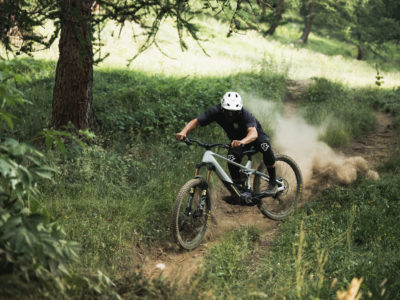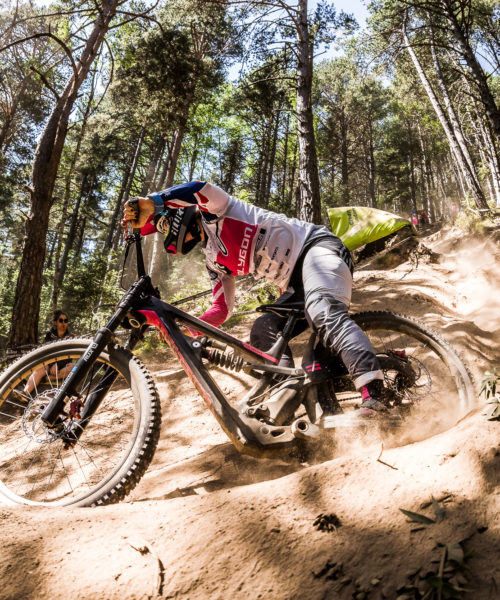Brake discs are an essential component on any bicycle, whether MTB, road bike, or e-bike. They are directly responsible for ensuring our safety and providing precise control in demanding situations such as technical descents, hard braking, or adverse weather conditions. However, despite their vital importance, brake discs are often one of the most overlooked parts when performing regular bike maintenance.
The goal of this article is to give you effective and practical methods to significantly extend the lifespan of your bicycle’s brake discs. You’ll learn how to spot early signs of wear, avoid common mistakes that accelerate deterioration, and discover simple preventive maintenance techniques you can apply yourself.
Keeping your brake discs in good condition not only improves overall bike performance but also has direct benefits for your personal safety and your wallet:
- Greater safety: Well-maintained discs ensure consistent, effective, and predictable braking, significantly reducing the risk of accidents.
- Cost savings: Proper maintenance delays disc replacement and reduces the need for major repairs, avoiding unnecessary expenses in the long run.
In short, properly caring for your brake discs is a smart investment that positively impacts your safety, performance, and budget. Let’s discover how to do it!
How long does a brake disc last on a bicycle?
One of the most common questions cyclists ask is how long their bike’s brake discs typically last. The reality is there’s no single answer, since disc lifespan mainly depends on the type of bike, the riding discipline, and the conditions of use.
Key factors that influence disc wear:
- Type of use: Bikes that undergo frequent descents or heavy braking, such as enduro or downhill MTBs, tend to wear discs faster than urban or leisure bikes.
- Riding style: Abrupt, prolonged, or aggressive braking wears discs more quickly. Smooth, anticipatory riding extends lifespan.
- Weather and terrain: Mud, rain, or constant dirt exposure greatly accelerate disc wear.
- Preventive maintenance: Clean, well-aligned discs paired with the right Galfer pads (avoiding metallic pads) typically last much longer.
- Disc design: Depending on the braking track design, durability can vary. For example, Galfer Disc Shark® brake discs last longer than most others on the market thanks to their braking track shape and inner fins, which allow lower operating temperatures and reduced wear.
Although each case is unique, here’s an approximate table showing average disc lifespan by cycling discipline:
| Cycling discipline | Approximate disc lifespan |
| MTB (Enduro/Aggressive Downhill) | 6–12 months |
| MTB (XC, Cross-country) | 12–24 months |
| Road bike | 18–36 months |
| Urban bike (daily use) | 24–48 months |
| E-bike | 12–18 months |
Note: these figures are indicative and may vary according to the factors above. To ensure performance and safety, check discs regularly, verify thickness, and watch for possible signs of wear or damage.
Knowing the estimated lifespan of your discs and the factors that accelerate wear allows you to anticipate issues, avoid unnecessary risks, and save on maintenance.
Signs of excessive brake disc wear
Identifying when to replace your bicycle’s brake discs is essential for your safety and for optimal performance on every ride. While each cyclist and bike is different, there are key signs that clearly indicate it’s time to replace your discs. Here are the most important:
Measuring minimum recommended thickness
All brake disc manufacturers specify a minimum safe thickness, usually marked on the disc itself. When your discs approach or fall below this limit, their performance and safety drop sharply.
- Recommended measurement: Use a digital or manual caliper to measure disc thickness at several points. The minimum is typically between 1.3 mm and 1.5 mm, depending on the manufacturer and model.
- If the thickness is below the specified value, replace the disc immediately to avoid braking failures or further damage. Always check thickness across different braking areas: inner, outer, and central.
Vibrations or unusual noises when braking
If you feel vibrations through the handlebar when braking, or hear persistent squealing or metallic sounds, the disc may be warped, scratched, or excessively worn.
- Vibrations suggest the disc may be deformed due to overheating or impact.
- Constant squealing may indicate uneven wear or surface damage, which reduces braking effectiveness. Noise can also be caused by brake pads or weather conditions.
Loss of braking efficiency
If you notice your bike takes longer to stop, or the braking feel is less firm and precise, disc wear may be affecting performance.
- Reduced braking efficiency endangers your safety, especially on steep descents or in adverse conditions such as rain or mud.
- This performance loss indicates discs are no longer working properly and likely need inspection or immediate replacement.
Paying attention to these signs is key to identifying when to change your discs. Regular inspections and preventive maintenance help extend lifespan while ensuring maximum safety and performance on your rides.
Galfer products to extend brake lifespan
One of the main keys to keeping your bike’s brake discs in top condition longer is choosing quality components specifically designed for performance and durability. Below are some of our recommended products to help maximize disc life and efficiency.
Galfer W MTB Discs: Their patented technology ensures excellent strength with high braking power at very low weight. The wave design also helps keep the braking surface cleaner, ideal for muddy or wet conditions.
Galfer W Road/Gravel Discs: The lightest disc in the range, providing smooth, progressive braking with one of the lowest weights on the market.
Galfer Shark Discs: Their innovative design delivers powerful braking with great thermal stability under all conditions, even at high temperatures. This extends the life of both discs and pads, up to 40% longer.
Galfer Bike Pads (Semi-metallic): Galfer Bike pads offer specific compounds for each cycling discipline. Semi-metallic pads deliver progressive, quiet braking, suitable for all-around use. Within the Galfer range we offer several compounds:
- Performance G1053: Versatile compound balancing efficiency and durability. Ideal for all conditions and amateur riders. Applications: XC, DH, Enduro, E-bike, Gravel, Road.
- Advanced G1851: Designed for wet, muddy, or extreme conditions, providing effective, consistent braking in adverse environments. Applications: XC, DH, Enduro, E-bike, Gravel.
- Pro G1554T: Special heat-treated pads that eliminate the need for prior bedding, delivering immediate braking effectiveness. Perfect for extreme descents with high brake temperatures. Firm and prolonged braking without power loss. Applications: Competition in XC, DH, Enduro, Road.
- E-Bikes G1652: Noted for heat resistance, braking power, durability, and noise-free operation. Developed specifically for e-bikes, which add weight and speed. Certified by ECE R-90 for E-bikes. Applications: E-bike.
- Road G1455: Pad compound developed for maximum performance on asphalt and in all weather conditions. Applications: Road.
- Sintered G1398: Perfect balance of aggressive yet progressive braking depending on lever pressure. Allows for precise wheel control or instant lock—essential in Bike Trial. Sintered pads perform equally well in dry and wet, making them versatile in all conditions. Applications: Bike Trial.
Choosing the right compound for your riding style helps optimize braking performance and extend disc lifespan.
Using high-quality, purpose-designed components is a decisive step in protecting your brake discs and ensuring a safe, enjoyable riding experience on all your routes.
Taking care of your bike’s brake discs is not just about maintenance—it’s a guarantee of safety, efficiency, and long-term savings.
Applying these tips requires no advanced technical knowledge, only consistency and attention. With a little prevention and regular maintenance, you’ll not only extend the lifespan of your brake discs but also enhance your cycling experience, gaining safety, confidence, and control on every ride.

